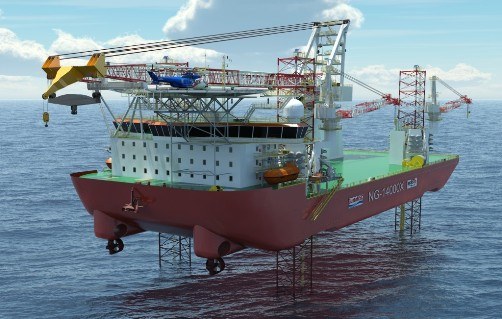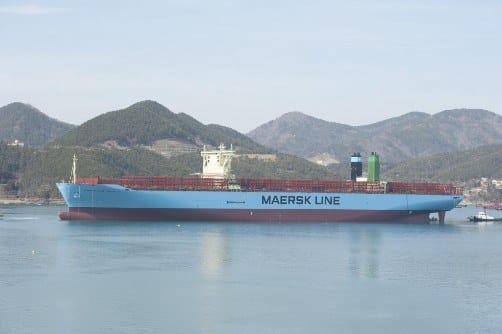U.S Navy Plans To Equip Submarines With Anti-ship Tomahawk Missiles In 2024 To Counter China
The US Navy intends to equip submarines with ship-targeting variants of the widely deployed Tomahawk missile starting next year as part of Washington’s push to beef up its military capacity to threaten Chinese maritime troops, notably around Taiwan.
According to program manager Capt, the “Maritime Strike” version of Tomahawk, RTX Corporation missile that has typically been deployed as a ground-attack weapon, will be fielded post-October 1, 2024. Jon Hersey. He added that the most recent models would be outfitted with a new guidance system allowing them to engage a mobile target at sea, adding that the Navy received the first version last year for testing before certifying it combat-ready.

Fielding the new Tomahawk, which first saw combat in the early hours during the 1991 Persian Gulf War in Iraq, would add to the United States’ expanding arsenal of advanced ship-attack missiles along with submarine-launched torpedoes designed to take on China’s quantitatively superior fleet. While the Navy intends to deploy the weapons on surface boats as well, these are more susceptible to China’s land and sea-based anti-ship arsenals.
Taiwan, which China claims to be its sovereign territory, is of concern to Washington, which considers safeguarding the island and its vital semiconductor industry a strategic, political, and economic priority.
The new marine strike missile’s timing approximately corresponds to the Pentagon’s intentions to field numerous drones in the Indo-Pacific area to challenge China, dubbed the Replicator program, which the Pentagon hopes to deploy on a wide scale between February and August 2025.
The development also coincides with Washington’s growing security partnership with the United Kingdom and Australia, referred to as Aukus. The trio outlined an array of plans on Friday, including deploying AI onboard aircraft patrolling the Pacific to track down Chinese submarines.
The three countries claimed they will use advanced AI algorithms on several systems, such as the P-8A Poseidon aircraft, for processing data from their sonobuoys, which are underwater detection sensors.
The missiles will be deployed on the Los Angeles and Virginia-class subs, carrying up to 12 land-attack Tomahawk missiles. Nevertheless, particular upgraded Virginia-class submarines can carry up to 40.
Per Brent Sadler, a senior research fellow on naval warfare and advanced technology with the Heritage Foundation, a former submariner, and the Navy’s APAC Advisory Group, said that the weapons range is 1,000 miles.
The lengthy range gives a greater standoff from China’s anti-access or area-denial missile forces, complicating Chinese plans for a blockade/invasion of Taiwan, according to Sadler. He said that more research is required to figure out how the missile could overwhelm China’s forces and destroy enough ships to win the war.
Japan may also deploy the updated anti-ship variant of the missile in the future. This month, the State Department informed Congress that Tokyo had been approved to receive its first ground-attack Tomahawk missiles in a deal for up to $2.35 billion for a maximum of 200 missiles.
If Japan obtains this weapon, the Chinese will face an additional level of complication, says Sadler. Based on the Pentagon’s most recent assessment of Chinese military capabilities, China’s naval force comprises 370 ships and submarines, including over 140 major surface combatants. The United States Navy possesses 291 deployable vessels.
China’s navy is mostly made up of modern multimission vessels and submarines, and it debuted its third aircraft carrier, the CV-18 Fujian, last year.
Vice Adm. William Houston, the Navy’s Submarine Forces Commander, told Bloomberg News that he is dedicated to fielding the Maritime Strike Tomahawk as soon as possible but that modernization, procurement, and fielding plans are dynamic and impacted by an array of factors such as industrial base and shipyard capacity.
The ship-launched RTX SM-6 air defence missile developed by the Pentagon’s Strategic Capabilities Office and Lockheed Martin’s Long Range Anti-Ship Missile are now part of the US anti-ship arsenal. It may be fired from the Air Force’s B-1-B bomber and the Navy’s F/A-18 E/F aircraft carrier fighter.
Separately, the Navy operates Boeing’s sea-skimming Harpoon anti-ship missiles, while Taiwan plans to purchase at least 400 ground-launched variants for coastal defence.
These types of missiles were prominent in a series of tabletop war games conducted by the Center for Strategic and International Studies last year, simulating a potential Chinese invasion of Taiwan.
Reference: Military.com
Disclaimer :
The information contained in this website is for general information purposes only. While we endeavour to keep the information up to date and correct, we make no representations or warranties of any kind, express or implied, about the completeness, accuracy, reliability, suitability or availability with respect to the website or the information, products, services, or related graphics contained on the website for any purpose. Any reliance you place on such information is therefore strictly at your own risk.
In no event will we be liable for any loss or damage including without limitation, indirect or consequential loss or damage, or any loss or damage whatsoever arising from loss of data or profits arising out of, or in connection with, the use of this website.
Disclaimer :
The information contained in this website is for general information purposes only. While we endeavour to keep the information up to date and correct, we make no representations or warranties of any kind, express or implied, about the completeness, accuracy, reliability, suitability or availability with respect to the website or the information, products, services, or related graphics contained on the website for any purpose. Any reliance you place on such information is therefore strictly at your own risk.
In no event will we be liable for any loss or damage including without limitation, indirect or consequential loss or damage, or any loss or damage whatsoever arising from loss of data or profits arising out of, or in connection with, the use of this website.
Do you have info to share with us ? Suggest a correction
About Author
Marine Insight News Network is a premier source for up-to-date, comprehensive, and insightful coverage of the maritime industry. Dedicated to offering the latest news, trends, and analyses in shipping, marine technology, regulations, and global maritime affairs, Marine Insight News Network prides itself on delivering accurate, engaging, and relevant information.

About Author
Marine Insight News Network is a premier source for up-to-date, comprehensive, and insightful coverage of the maritime industry. Dedicated to offering the latest news, trends, and analyses in shipping, marine technology, regulations, and global maritime affairs, Marine Insight News Network prides itself on delivering accurate, engaging, and relevant information.
Related Articles
Daily Maritime News, Straight To Your Inbox
Sign Up To Get Daily Newsletters
Join over 60k+ people who read our daily newsletters
By subscribing, you agree to our Privacy Policy and may receive occasional deal communications; you can unsubscribe anytime.




BE THE FIRST TO COMMENT